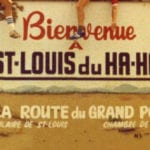 Weird Stuff
Weird Stuff  Weird Stuff
Weird Stuff  Mysteries
Mysteries 10 Tragic Disappearances and Deaths in Joshua Tree National Park
 History
History 10 Ways Childhood Really Sucked in the Old West
 Music
Music 10 Name Origins of Famous Bands from the 1990s
 Religion
Religion 10 Biggest Turnarounds by the Catholic Church
 Weird Stuff
Weird Stuff 10 Unbelievable Times Laws Had Unintended Consequences
 Humans
Humans Ten Historic Women Who Deserve Way More Credit Than They Got
 Movies and TV
Movies and TV 10 Films That Spawned Major Lawsuits
 History
History Ten Times Towns Were Wiped Off the Face of the Earth
 Creepy
Creepy 10 of the Most Disturbingly Haunted Public Houses in the UK
 Weird Stuff
Weird Stuff 10 Niche Subcultures That Are More Popular Than You Might Think
 Mysteries
Mysteries 10 Tragic Disappearances and Deaths in Joshua Tree National Park
 History
History 10 Ways Childhood Really Sucked in the Old West
Who's Behind Listverse?

Jamie Frater
Head Editor
Jamie founded Listverse due to an insatiable desire to share fascinating, obscure, and bizarre facts. He has been a guest speaker on numerous national radio and television stations and is a five time published author.
More About Us Music
Music 10 Name Origins of Famous Bands from the 1990s
 Religion
Religion 10 Biggest Turnarounds by the Catholic Church
 Weird Stuff
Weird Stuff 10 Unbelievable Times Laws Had Unintended Consequences
 Humans
Humans Ten Historic Women Who Deserve Way More Credit Than They Got
 Movies and TV
Movies and TV 10 Films That Spawned Major Lawsuits
 History
History Ten Times Towns Were Wiped Off the Face of the Earth
 Creepy
Creepy 10 of the Most Disturbingly Haunted Public Houses in the UK
10 Stories Behind Beatles Songs
The Beatles are still the most recognized group in the world. From Moscow to Maui, everyone seems to have heard of them, or has experienced their flamboyant talent in some way, shape or form. The group had twenty-seven number one hit UK singles during their career, and have been credited with twenty-two separate number one albums worldwide – a position still unsurpassed by any other musical act. They have also sold more albums in the US than any other artist, have received 7 Grammy awards, 15 Ivor Novello awards, and hold the number one spot on the Billboard Hot 100 of the greatest top-selling artists of all time.
This list takes a look beyond the legend to discover the real truth behind some of the songs which made the group famous. They are listed in no particular order, and there is an option to do a sequel. As always, please give us your considered comments below.
Cilla Black (real name Priscilla White), was a typist before a part-time job as a cloakroom attendant at Liverpool’s Cavern Club brought her to the attention of Brian Epstein – who signed her to Parlophone records. Her February 1963 debut single ‘Love of the Loved’ (an old Quarry Men song written by Lennon and McCartney and used on their original Decca demo tape) went to #35 in the charts – and sparked a career which would span over 45 years. Then in 1964 Paul McCartney wrote ‘It’s For You’ for her, which peaked at #7. Meanwhile, Brian Epstein continued to work fervently on Blacks career; finally securing a deal to front her own television show on 26 August 1967. The very next day he was found dead in his Chapel Street house in London – Blacks unsigned TV contract was found next to him.
‘Cilla’ was to be first aired at the beginning of 1968 and needed a theme tune which Black would sing live at the beginning of every show, and a mid White Album McCartney was keen to get involved. “You’re the kind of person that should invite people into your house,” commented Paul, “You should have a song that starts off very quiet and then builds up.” Paul’s first demo of the song ‘Step Inside Love’ contained only one verse and a chorus – which the producers used for a few weeks before enrolling McCartney to do a second verse. He reworked the piece into a full song which was released as a single on 8 March 1968 reaching #8 in the UK charts. However, the song was subsequently banned in South Africa under claims of prostitutes using the hook line as an invitation call. “It could have been worse,” said The Beatles road manager Tony Bramwell, “Paul’s original idea was to call it ‘Come Inside Love.’”
Like a number of classic Beatles songs, ‘I’ve Got a Feeling’ was a combination of two unfinished songs. The first – ‘I’ve Got a Feeling’ – was written by Paul as a love song for the new light in his life Linda Eastman, whom he’d first met two years earlier in June 1967 during an assignment to take photographs of “Swinging Sixties” musicians in London. The pair celebrated the launch of Sgt. Pepper together in June 1967 but rarely met in public until late 1968 during the recording of the White Album when it was decided they should move in together. They married two months after ‘I’ve Got a Feeling’ was recorded during their live rooftop concert (30 Jan 1969) on 12 March 1969 at Marylebone Registry Office in London.
The second song ‘Everybody’s Had a Hard Year’ was John’s own self-reflective composition and was a litany where every line began with the word ‘everybody’. The main guitar riff of this track came from a January 14th, 1969 demo entitled “Watching Rainbows”. This had been developed and then abandoned during the infamous ‘Get Back’ sessions at Twickenham Studios. Indeed, everybody HAD been through a hard year: the Apple Boutique had closed down, Paul had relationship problems with his former girlfriend Jane Asher, the Maharishi had been accused of sexual indecency (which was the inspiration behind the song Sexy Sadie), and John, himself, had been through a divorce with his former wife Cynthia and had been separated from his son, Julian. Yoko Ono had suffered a miscarriage, John and George had been arrested on charges of drug possession, and John had been forced to sell his Waybridge home when his personal fortune was reported to have dwindled to just £50,000. Added to that the pressure of the ‘Get Back’ sessions and the inspiration behind the song becomes clear.
‘She’s A Woman’ was recorded by the Beatles on October 8, 1964 and released 6 weeks later as a B-side to the number one hit single ‘I Feel Fine’. ‘I Feel Fine’ spent five weeks in the top spot of the UK charts over the 1964 Christmas period. The song was conceived by Paul on the streets of St John’s Wood, London, as he was fully intending to write a song in the high-pitched bluesy style of his hero Little Richard – whom the Beatles had met almost exactly two years earlier, at the Tower Ballroom in Blackpool. “We needed a real screaming rocker for the live act,” said Paul. “It was always good if you were stuck for something to close with, or if there was a dull moment.” In 1965 he went on to say “A lot of people thought that I was just singing too high and that I’d picked the wrong key. It sounded as though I was screeching, but it was on purpose. It wasn’t a mistake.”
The song is notable as the first Beatles’ song to contain a drug reference: ‘turns me on when I get lonely’ – and came directly from their first experience of marijuana, just five weeks earlier, with Bob Dylan at the Delmonico Hotel in New York City. Dylan himself assumed the lads had smoked marijuana before having misheard the lyric ‘I can’t hide’ in ‘I Want to Hold Your Hand’ as ‘I get high’. Until then, their only drug experience had been Drinamyl and Preludin tablets (both amphetamine type stimulants) which they discovered whilst in Hamburg, and Benzedrine inhalers they’d been given in Liverpool. John later disclosed that he was “so excited to say ‘turn me on’ – you know, about marijuana and all that… using it as an expression.” The track escaped the attention of media censorship, but a similar phrase used three years later in ‘A Day In The Life’ went on to get that song banned from the airwaves in many countries – when by then (perhaps ironically), the authorities were more ‘turned on’ to the growing drug culture and it’s references within the media.
This song was penned while on a tour bus traveling from York to Shrewsbury, in support of the popular singer Helen Shapiro. They demoed the song on arrival at Shrewsbury that same afternoon, in preparation for a concert at the Granada Cinema. “They asked me if I would come and listen to two songs they had,” recalls Shapiro. “Paul sat at the piano and John stood next to me and they sang ‘From Me To You’ and ‘Thank You Girl’” She responded positively towards ‘From Me To You’ saying it would “make the best A side”. The Beatles took the song to Liverpool the next day, where they played if for Pauls’ father, who convinced them that it was a “nice little tune”. The title of the song appears to come from the New Musical Express magazines letter column which went by the name of ‘From You to Us’ – of which the lads were avid readers.
Both Paul and John took turns to write the song – making it one of the only Beatles hits they built from scratch together, and using words such as ‘I’, ‘me’, or ‘you’ as a way of making the song, according to McCartney, “very direct and personal”. The hook for the song was an ‘ooooh’ sound the Beatles arguably borrowed from the Isley Brothers 1962 recording of ‘Twist and Shout’ – a song the Beatles had also covered the year before. Upon hearing this gimmick the singer and comedian Kenny Lynch, who was also throwing in ideas for the song, exclaimed, “You can’t do that. You sound like a bunch of fucking fairies!”. He then reportedly stormed from the back of the coach where they were rehearsing shouting ‘Well, that’s it. I am not going to write any more of that bloody rubbish with those idiots. They don’t know music from their backsides. That’s it! No more help from me!’” ‘From Me To You’ was recorded five days later and went on to become the groups second #1 hit single.
Sometime during the early part of 1967, Paul McCartney emerged from Abbey Road Studios to find a parking attendant was in the process of ticketing his car. He immediately walked over and removed the ticket from the windscreen. The attendant later recalled “I had to make out a ticket which, at that time, carried a ten shilling fine. He [Paul] looked at it and read my signature [which was] written in full… Meta Davis. He said ‘Oh, is your name really Meta?’ I told him that it was. He said ‘That would be a good name for a song. Would you mind if I use it?’ And that was that. Off he went.”
A friend of Pauls, whilst visiting London on vacation from America, noticed another attendant (in those days a rare site in the UK and who were more commonly known as a ‘Traffic Wardens’), and exclaimed “I see you’ve got meter maids over here these days.” Paul then went back to his piano and started to write the track. “I was thinking it should be a hate song,” he later mused. “but then I thought it would be better to love her.” Out of this came the idea of an office worker who tries to get out of a parking fine by seducing the attendant. “I was imagining the kind of person I would be to fall for a meter maid.” The gimmick during the recording of the song on February 23rd, 1967 was George Harrison playing comb and paper. The ‘paper’ in question was secured from an Abby Road lavatory, with the indignity of having the words ‘Property of EMI’ stamped all over it. This was used to cover hair combs, which they blew through to resemble the sound of a kazoo orchestra. Meta Davis later remarked “I was never a Beatles’ fan, but you couldn’t help hearing their music.”
Not to be confused with the much longer tape-loop arrangement Revolution 9, Revolution 1 as it is sometimes called (and the later recording but earlier released single, Revolution mk.2) was John’s answer to the growing civil unrest of early 1968. The Summer of Love had made way for the Spring of Revolution, and in March 1968 many thousands gathered to march on the American Embassy in London to protest against the Vietnam war. At the same time, various Leninist, Trotskyist and Maoist groups were pressing on Lennon for moral and financial support. In contrast, John strongly believed that an inner moral revolution was more important than a violent external one, and penned the song as someone under pressure to declare his allegiances – of which he was still unsure. He famously left the question open by including the line ‘you can count me in/out’. By the second recording, the faster Revolution mk.2 (9–13 July 1968), he had apparently made his choice and sang ‘count me out’ – to the dismay of several left-wing magazines who reported it as a “betrayal” and a “bourgeois cry of fear”.
After another attack by Keele University student John Hoyland, Lennon wrote a passionate letter to the University explaining “All I’m saying is I think you should do it by changing people’s heads, and they’re saying we should smash the system. Now the system-smashing scene has been going on forever. What’s it done? The Irish did it, the Russians did it, the French did it and where has it got them? It’s got them nowhere. It’s the same old game. Who’s going to run this smashing up? Who’s going to take over? It’ll be the biggest smashers. They’ll be the ones to take over. I don’t know what the answer is but I think it’s down to people. Until you/we change your/our heads – there’s no chance.” The ‘Hey Jude’ single, containing ‘Revolution’ as a B-side, began its sixteen-week run on the UK charts on September 7th, 1968, claiming the top spot a week later. It sold over 3 million copies in America in its first 2 months of release and eventually sold over 4 million copies, to become the fourth best-selling single of the 1960s.
Often incorrectly pronounced ‘Please-Please Me’, the song ‘Please, PLEASE Me’ uses the word ‘please’ in two contexts. The original inspiration, according to John, came from a song called ‘Please’ which was recorded by Bing Crosby in 1932. “I was also always intrigued by the words to [that] song that went, ‘Oh please, lend a little ear to my pleas. Lend a ray of cheer to my pleas, Tell me that you love me too.’” John was also a huge fan of the soulful singer Roy Orbison, “I remember the day I wrote it, I’d just heard Roy Orbison doing ‘Only the Lonely.’” He immediately went about creating a song in the style of Orbison along with the homophone words of Crosby. Years later, late 1962, the Beatles had their first minor single under their belts and were keen to release a hit. George Martin initially considered the song “rather dreary” and that it “badly needed pepping up”. The Beatles on the other hand were determined to record it rather than fall back on other works by other writers. Ringo Starr commented: “I remember us all being ready to stand up for the principle of, ‘We have written these songs and we want to do them!’”. Reluctantly, Martin reworked the song and 18 takes and many additions (including a harmonica section) later, it was mastered. John recalls “We went over it and over it again and again. We altered the tempo a little. We altered the words slightly. By the time we came to record it we were so happy with it we couldn’t wait to get it down.”
Within weeks of the single being released – giving the lads their first #1 UK hit – they were selected to support Roy Orbison during a three-week tour of Britain. Orbison later said, in an interview “We never talked to each other about song writing on that tour. The basic thing they wanted to know at that time was how to break into America.” In May 1963, Roy Orbison went on to say: “The Beatles could well be tops in America. They have something that is entirely new, even to us Americans, and although we have an influx of hit groups at home [I think] it’s a change to see new stars who are not just watered-down versions of Elvis Presley.” He advised them to get on the Ed Sullivan Show – which eventually they did – and this, indeed, proved to be the break they needed. In 1987 George Martin let slip to a visiting Orbison that ‘Please, Please Me’ was inspired by him. “They told me that it sounded so much like me that they had to change it a little bit. That’s a nice thing to find out.” The following year he went on to join George Harrison on the Traveling Wilburys album.
On January 31, 1967, whilst making the promotional film for ‘Strawberry Fields Forever’, around Knole Park near Sevenoaks in Kent, John Lennon and The Beatles road manager, Tony Bramwell, headed off into town during a break. Walking by an antiques shop they decided to take a look. According to Bramwell “John and I wandered in and John spotted this framed Victorian circus poster and bought it.” The poster, printed in 1843, advertised a show by Pablo Fanque’s Circus Royal which was to be held at Town Meadows, Rochdale, Lancashire (on the evening of February 14th 1843) and proudly announced ‘the grandest night of the season’. Lennon took the poster home and hung it on the wall of his music room – where he soon discovered a new use for it. The poster boasted ‘Being for the benefit of Mr. Kite – Mr J. Henderson the celebrated somerset thrower [would] introduce his extraordinary trampoline leaps and somersets over men and horses, through hoops, over garters, and lastly through a hogshead of real fire. In this [way] Mr H challenges the world.’ John took the lines wholesale – changed ‘somersets’ to the more modern definition ‘somersaults’, changed the location from Rochdale to Bishopsgate and turned the Circus into a Fair. A week later, starting February 17th, 1967, the song was recorded – released on the 1st of June – and then banned by the BBC for containing the line ‘Henry the Horse’; which apparently contained two words that were individually known as slang for heroin – a fact which Lennon fervently denied.
In their day, Pablo Fanque (real name William Darby – the first black circus proprietor in Britain) and The Hendersons were stars of the circus world. Mr Kite was William Kite, himself the son of a circus proprietor – who had his own Kite’s Pavilion Circus before working with Fanque between 1843 and 1845. By 1948 both Mr Kite and the Henderson’s had left Pablo Fanque’s Circus. However, on the night of Saturday March 18, 1848, at the Headrow in Leeds, Pablo’s son was entertaining a large crowd with his tightrope act when a wooden gallery collapsed. The 600 people seated on it fell with the timbers. There was only one fatality – Pablo’s wife – Susannah Darby, who had been hit on the back of the head by two heavy planks. Pablo pulled her from the wreckage himself but a surgeon at the King Charles Hotel in Leeds pronounced her dead. In the confusion, one of the locals pinched a cashbox with the £50 night’s takings in it. Pablo himself died at The Britannia inn, Stockport, on 4 May 1871; ninety-six years before the Beatles song was written.
Debatably the only comedy number in the Beatles repertoire, ‘You Know My Name’ started life one day in the Summer of 1967, just before the release of Sgt. Pepper. John recalls “That was a piece of unfinished music that I turned into a comedy record with Paul. I was waiting for him in his house, and I saw the phone book was on the piano with ‘You know their name, look up their number.’ That was like [their] logo, and I just changed it.” Paul continues: “John turned up at the studio and said, ‘I’ve got a new song’. I said, ‘What’s the words?’ and he replied ‘You know my name look up the number’. I asked, ‘What’s the rest of it?’ ‘No, no other words, those are the words. And I want to do it like a mantra!’” The Beatles worked on the song for three days in May and June 1967, and on 8 June included a saxophone section which, according to Mark Lewisohn and Bill Wyman, was played by Rolling Stones’ founding member Brian Jones. The project was eventually abandoned until April 1969 when, 4 months after Jones drowned in his swimming pool, John recovered the song and began to rework it, intending to release it as an A-side to ‘What’s The New Mary Jane’, as a Plastic Ono Band single. The song by then contained five sections – which were cut down from over six minutes to 4:19 – and the track in it’s short form eventually found it’s way to becoming the B-side of the ‘Let It Be’ single. A longer version also appeared on the Beatles Anthology 3 in 1996 but no full-length version (to date) has ever been released.
The only variation of the title phrase to appear in the song happens twice as John asks the audience to ‘give a big hand for Denis O’ Bell’. The name was taken from the Irish-born film producer, Denis O’ Dell, who had been involved with the production of A Hard Days Night and who went on to become director of Apple Films. However, nobody had thought to inform Denis of the line in the song and it came as quite a shock to him when he began to receive phone calls at his home in St. George’s Square, Pimlico. “There were so many of them my wife started going out of her mind,” said O’Dell “We were starting to get people turn up on our doorstep. Once there were 10 or 12 of these people who’d tracked me down thinking they could all come and live with us!” He continues: “I happened to be in one Sunday and picked up the phone myself – it was someone on LSD calling from a candle-making factory in Philadelphia [who] kept on saying ‘We know your name and now we’ve got your number.’ O’ Dell telephoned Ringo Starr who explained the whole thing. “He [Ringo] played the track for me and I realized why I’d been getting all these mysterious phone calls. It was because of this experience that I went ex-directory.”
“A-level girl dumps car and vanishes. The Father of 17-year-old Melanie Coe, the schoolgirl who seemed to have everything, spent yesterday searching for her in London and Brighton.” This was the headline to appear as the cover story in the February 27, 1967 copy of London’s Daily Mail newspaper. Paul McCartney picked it up, and with only the story in the newspaper to go on, created a very moving song about a girl who runs away from her claustrophobically respectable home in search of love and attention. Unbeknown to Paul, he had actually met Melanie Coe just three years before when she had won a mime competition awarded by the hit television show Ready Steady Go!. On Friday October 4, 1963, Melanie went up to receive the award given by none other than Paul McCartney as, by coincidence, it happened to be the first time the Beatles had appeared on the show. Melanie then became a regular dancer – often appearing in camera shot merrily supporting the artist of the day. However, this was only masking the real story in Melanie’s life – who had experienced difficulties with her parents from a young age – and decided in February 1967 that she’d had enough.
“When I went out, I could be me. In fact, in the clubs I was encouraged to be myself and have a good time,” Melanie later confessed, recalling the memories of her parents scouring the bars and clubs for her from the age of 13. If they found her she would be hit. “When the song says ‘something was denied’, that was me. I wasn’t allowed to be me. I was looking for excitement and affection. My Mother wasn’t affectionate at all. She never kissed me.” Melanie took the step to remove herself from the family home to rent a flat with David, a croupier she had met in a club, in Sussex Gardens near Paddington Station. The day the newspaper came out, Melanie saw her photo and “immediately went back to the flat to put on dark glasses and a hat,” she said. “From then on, I lived in terror that they’d find me. They did discover me after about ten days, because I think I’d let it slip where my boyfriend worked. They talked to his boss who persuaded me to call them up. When they eventually called to see me, they bundled me into the back of their car and drove me home.” Melanie married at 18 to escape her parents and moved herself to America to live in an ashram. She is now known to live in Spain with her two children and a partner, although she still harbors some regret. “It was nice to be immortalized in a song but it would have been nicer if it had been for doing something other than running away from home.”








